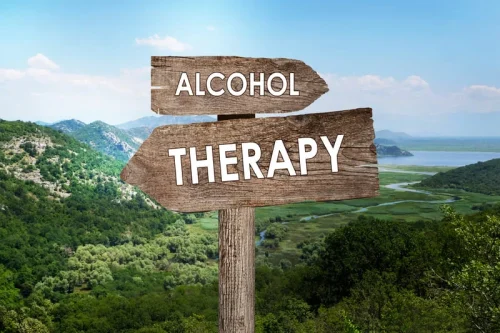Short-term abstinence effects across potential behavioral addictions: A systematic review

The RP model proposes that at the cessation of a habit, a client feels self-efficacious with regard to the unwanted behaviour and that this perception of self-efficacy stems from learned and practiced skills3. In a prospective study among both men and women being treated for alcohol dependence using the Situational Confidence Questionnaire, higher self-efficacy scores were correlated to a longer interval for relapse to alcohol use8. The relationship between self-efficacy and relapse is possibly bidirectional, meaning that individuals who are more successful report greater self-efficacy and individuals who have lapsed report lower self-efficacy4. Chronic stressors may also overlap between self-efficacy and other areas of intrapersonal determinants, like emotional states, by presenting more adaptational strain on the treatment-seeking client4. An important part of RP is the notion of Abstinence violation effect (AVE), which refers to an individual’s response to a relapse where often the client blames himself/herself, with a subsequent loss of perceived control4.
Genetic influences on treatment response and relapse

Similar to the reward thought, you may have another common thought after a period of sobriety. When you’ve experienced some success in your recovery, you may think that you can return to drug or alcohol use and control it. You may think that this time will be different, but if your drinking and drug use has gotten out of control in the past, it’s unlikely to be different this time. Relapse is a process in which a newly abstinent patient experiences a sense of perceived control over his/her behaviour up to a point at which there is a high risk situation and for which the person may not have adequate skills or a sense of self-efficacy. Self- efficacy increases and the probability of relapsing decreases when one is able to cope with this situation31.

Physical Relapse
It has also been used to advocate for managed alcohol and housing first programs, which represent a harm reduction approach to high-risk drinking among people with severe AUD (Collins et al., 2012; Ivsins et al., 2019). The results of the Sobell’s studies challenged the prevailing understanding of abstinence as the only acceptable outcome for SUD treatment and raised a number of conceptual and methodological issues (e.g., the Sobell’s liberal definition of controlled drinking; see McCrady, 1985). A “controlled drinking controversy” followed, in which the Sobells as well as those who supported them were publicly criticized due to their claims about controlled drinking, and the validity of their research called into question (Blume, 2012; Pendery, Maltzman, & West, 1982). Despite the intense controversy, the Sobell’s high-profile research paved the way for additional studies of nonabstinence treatment for AUD in the 1980s and later (Blume, 2012; Sobell & Sobell, 1995). Marlatt, in particular, became well known for developing nonabstinence treatments, such as BASICS for college drinking (Marlatt et al., 1998) and Relapse Prevention (Marlatt & Gordon, 1985).

2. Established treatment models compatible with nonabstinence goals
- One is to help clients identify warning signs such as on-going stress, seemingly irrelevant decisions and significant positive outcome expectancies with the substance so that they can avoid the high-risk situation.
- Family members are counselled so as identify potential risk factors for relapse, such as emotional and behavioural changes.
- The focus is on identifying and accepting the urge, not acting on the urge or attempting to fight it4.
Although non-dieters ate less after consuming the milkshakes, presumably because they were full, dieters paradoxically ate more after having the milkshake (Figure 1a). This disinhibition of dietary restraint has been replicated numerous times [20,28] https://ecosoberhouse.com/article/what-are-sober-living-homes/ and demonstrates that dieters often eat a great deal after they perceive their diets to be broken. It is currently not clear, however, how a small indulgence, which itself might not be problematic, escalates into a full-blown binge [29].
- In addition, Helzer et al. identified a sizable group (12%) of former alcoholics who drank a threshold of 7 drinks 4 times in a single month over the previous 3 years but who reported no adverse consequences or symptoms of alcohol dependence and for whom no such problems were uncovered from collateral records.
- Historically, abstinence has also been the dominant long-term treatment goal within treatment settings for gambling disorder (Ladouceur, Lachance, & Fournier, 2009).
- Fortunately, professional treatment for addiction can improve outcomes for people experiencing the Abstinence Violation Effect.
- (Moderating effects of OPRM1 were specific to participants receiving medication management without the cognitive-behavioral intervention [CBI] and were not evident in participants receiving NTX and CBI).
- Ark Behavioral Health offers 100% confidential substance abuse assessment and treatment placement tailored to your individual needs.
About 26% of all U.S. treatment episodes end by individuals leaving the treatment program prior to treatment completion (SAMHSA, 2019b). Studies which have interviewed participants and staff of SUD treatment centers have cited ambivalence about abstinence as among the top reasons for premature treatment termination (Ball, Carroll, Canning-Ball, & Rounsaville, 2006; Palmer, Murphy, Piselli, & Ball, 2009; Wagner, Acier, & Dietlin, 2018). One study found that among those who did not complete an abstinence-based (12-Step) SUD treatment program, ongoing/relapse to substance use was the most frequently-endorsed reason for leaving treatment early (Laudet, Stanick, & Sands, 2009). A recent qualitative study found that concern about missing substances was significantly correlated with not completing treatment (Zemore, Ware, Gilbert, & Pinedo, 2021).

Addictive Behaviors
The lapse process consists of a series of internal and external events, identified and analyzed in the process of therapy. Therapy focuses on providing the individual the necessary skills to prevent a lapse from escalating into a the abstinence violation effect refers to relapse31. Problem solving therapy (PST) is a cognitive behavioural program that addresses interpersonal problems and other problem situations that may trigger stress and thereby increase probability of the addictive behaviour.
- Overall, the results were consistent with the review conducted by Irvin and colleagues, in that the authors concluded that 58% of individuals who received CBT had better outcomes than those in comparison conditions.
- Important features common to these groups include low program barriers (e.g., drop-in groups, few rules) and inclusiveness of clients with difficult presentations (Little & Franskoviak, 2010).
- Overall, the body of research on genetic influences on relapse and related processes is nascent and virtually all findings require replication.



